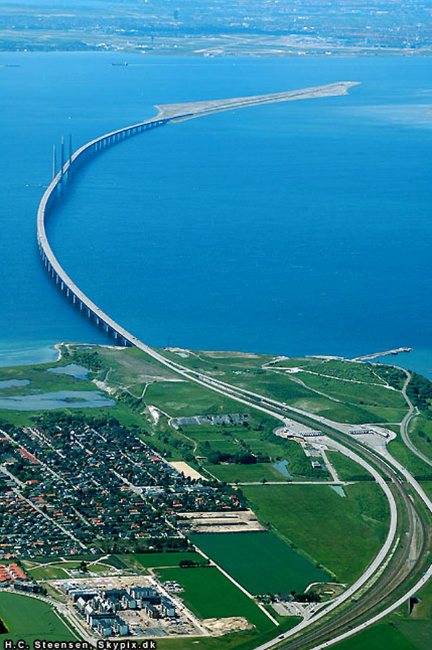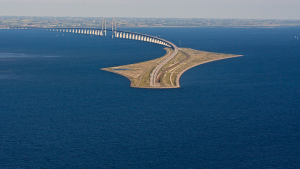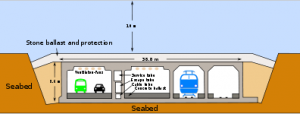
Oresund Bridge that turns into a tunnel and connects Denmark and Sweden


The Oresund Bridge ( Oresundsbroen in Danish) and (Oresundsbron in Swedish) is a combined railway and motorway bridge across the Oresund strait between Denmark and Sweden. It is engineering marvel that with direct connection from the Danish capital of Copenhagen to the Swedish city of Malmo. The bridge runs 5 miles ( 8km) to an artificial island where it transitions into a tunnel underwater that runs 2.5miles (4km).
The Oresund Bridge is the longest combined road and rail bridge in Europe and connects the road and rail networks of the Scandinavian Peninsula with those of Central and Western Europe. A data cable also makes the bridge the spine of the internet data transmission between central Europe and Sweden and Finland. The International European route E20 crosses via road the Oresund line via railway.
The bridge was first formally proposed in 1936 by a consortium of engineering firms who proposed a national motorway network for Denmark. And only in 1973 an agreement was signed for a direct link from Copenhagen to Malmo and the project was cancelled in 1978 due to the economic situation.
The 7,845m ( 25,738 ft) long bridge covers half the distance between Sweden and Danish island of Amager. The structure has a mass of 82 tonnes and supports two railway tracks beneath four road lines in a horizontal girder extending along the entire length of the bridge. On both approaches to the cable supported bridge sections, the girder is supported every 140m (459 ft) by concrete piers. The two pairs of free-standing cable towers are 204m (669ft) high allowing shiping 57m (187ft) headroom under the main span.

